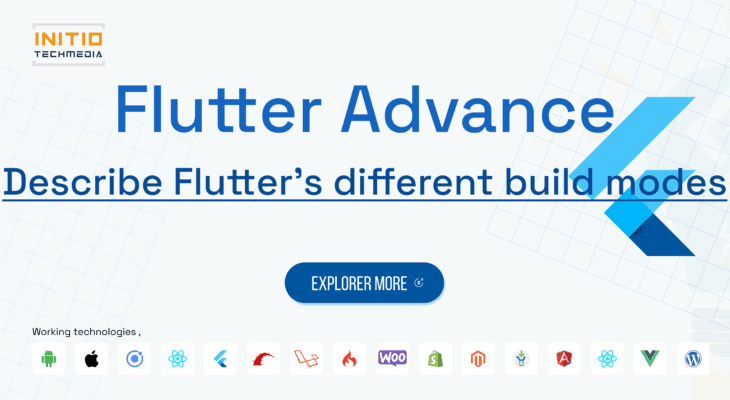
Describe Flutter’s different build modes.
- payal patel
- May 23, 2023
- 0
Flutter, a popular cross-platform framework for building mobile applications, offers several build modes to cater to different development and deployment needs. These build modes determine how your Flutter app is compiled and optimized for specific scenarios. Flutter provides the following build modes:
Debug Mode: Debug mode is primarily used during development. When running your app in debug mode, Flutter provides hot-reload and hot-restart capabilities, allowing you to quickly iterate and see the changes reflected in real-time. Debug mode includes additional debugging information and performs minimal optimizations, making it easier to identify and fix issues. However, the app may run slightly slower compared to other build modes.
Profile Mode: Profile mode is designed for performance profiling and optimizing your app. When building your app in profile mode, Flutter applies various optimizations, such as tree shaking and inlining, to improve performance. It also collects profiling information, which can be analyzed to identify bottlenecks and optimize your code. Profile mode provides a balance between performance and debugging capabilities, making it suitable for performance testing and analysis.
Release Mode: Release mode is intended for the final production version of your app. When building your app in release mode, Flutter applies aggressive optimizations to produce a highly optimized and efficient binary. It performs extensive tree shaking, dead code elimination, and minification to reduce the app’s size and improve performance. Release mode excludes debug information and disables debugging features, resulting in a smaller app size and improved execution speed. It is recommended to thoroughly test your app in release mode before deploying it to production.
JIT (Just-in-Time) Mode: JIT mode is the default mode used during development. It allows Flutter to use its Hot Reload feature, which enables rapid code changes and instant updates in the running app. In JIT mode, the Dart code is compiled into a platform-specific intermediate representation (IR), which is then executed by the Dart runtime. This mode provides a highly iterative development experience but has a slightly slower startup time and larger binary size compared to the AOT (Ahead-of-Time) compilation used in release mode.
AOT (Ahead-of-Time) Mode: AOT mode is used in release mode and produces a compiled binary executable specific to the target platform. In AOT mode, the Dart code is ahead-of-time compiled into native machine code, resulting in faster startup times and smaller binary sizes compared to JIT mode. AOT compilation enables the app to run efficiently without the need for a Just-in-Time compiler, making it well-suited for production deployments.
These different build modes in Flutter offer developers flexibility in terms of development speed, performance optimization, and deployment considerations, allowing them to choose the most appropriate mode based on their specific requirements.

